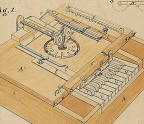Sanitation Innovation

In 1841 English author Charles Dickens, at work on a book about the United States of America, came for a research tour. He spent a month in New York City acquainting himself with theaters, restaurants, prisons, asylums, neighborhoods, and streets. Having documented London’s Augean slums, Dickens nonetheless goggled at the sight of lower Manhattan’s Five Points. Originally the Collect, a deep freshwater pond that was fouled by chemicals and offal from abattoirs and tanneries, then inexpertly reclaimed with landfill, the Five Points existed in a fog of stench. Named for the five-way intersection at its miasmic heart, the neighborhood barely was keeping itself atop its swampy setting, its ramshackle housing literally sinking below ground. In American Notes Dickens describes a place “reeking, everywhere with dirt and filth…. all that that is loathsome, drooping and decayed is here.” The Five Points personified a city so neglected by its government that garbage blanketed its streets. In the decades following Dickens’s visit, New York grew in a swirl of trash and worse, until citizen-reformers, a mustachioed engineer, and a very special uniform intervened with solutions that eventually reverberated worldwide.

HISTORICALLY NEW YORK HAD BEEN A BURG BESLIMED BY HOUSE-FRONT PRIVIES AND STREETS FULL OF HORSE MANURE, RUBBISH, AND ANIMAL CARCASSES.
the city was struggling with trash. When the Dutch West India Company established a trading post on Manhattan’s southern tip in 1624, New Amsterdam counted 270 residents. Forty years later a city of over 9,000, rough and lawless, perched on the edge of the known world. Early records portray a burg beslimed. House fronts featured privies. Horse manure, garbage, animal carcasses,
You’re reading a preview, subscribe to read more.
Start your free 30 days





